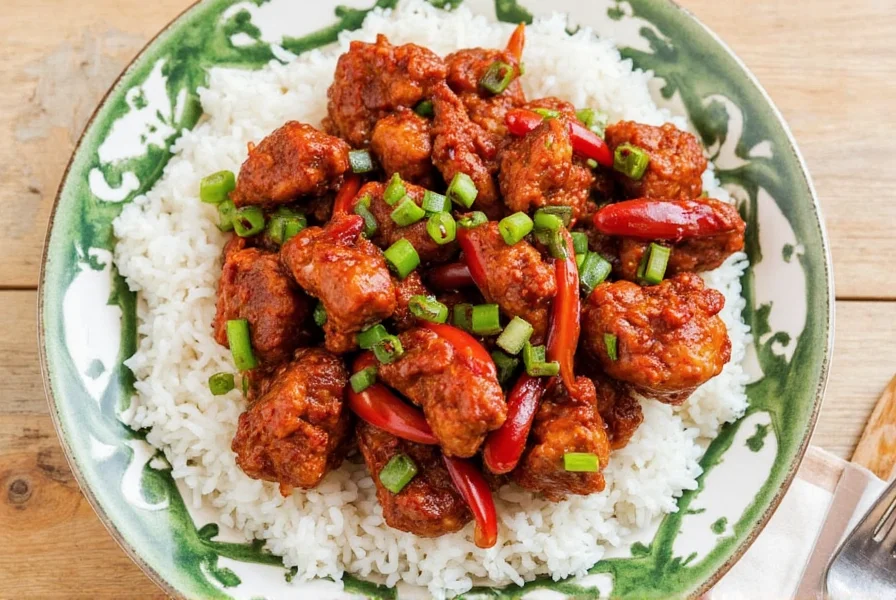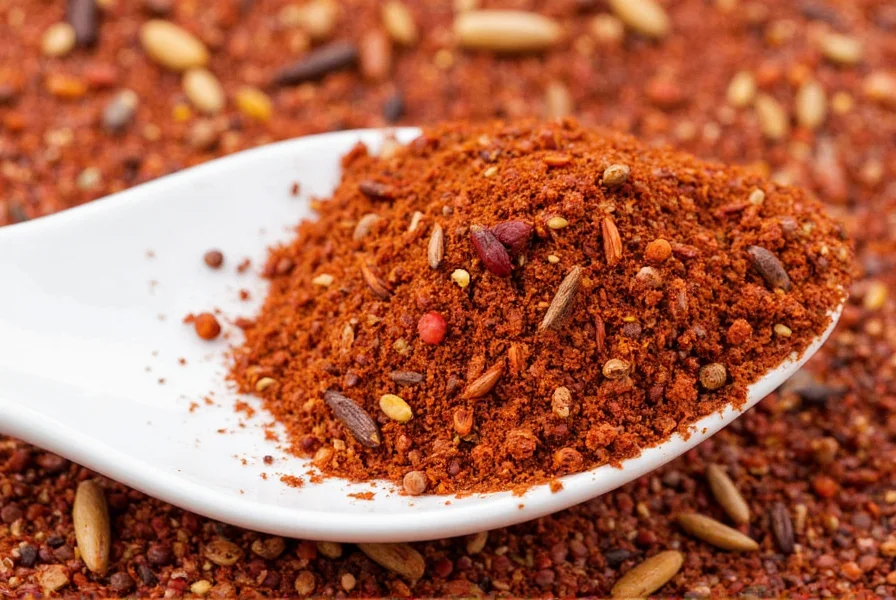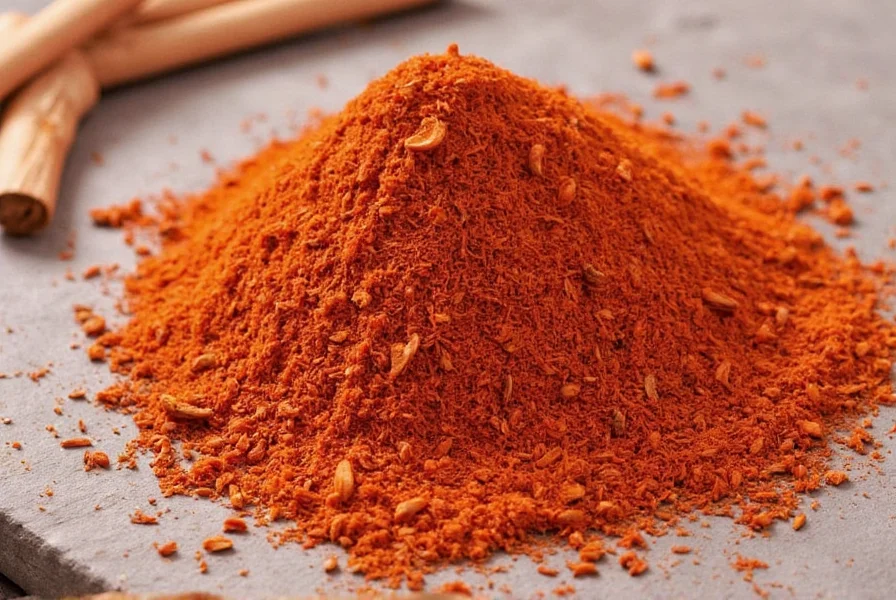Szechuan (also known as Sichuan) cuisine is a culinary tradition originating from China's Sichuan province, famous for its bold flavors and the distinctive 'ma la' sensation—a combination of spicy heat and mouth-tingling numbness created primarily by Sichuan peppercorns. Unlike other regional Chinese cuisines that focus on single flavors, authentic Szechuan cooking balances seven fundamental tastes: spicy, numbing, sour, sweet, salty, fragrant, and bitter. This unique flavor profile has made Szechuan one of China's most celebrated culinary traditions and a global phenomenon.
Table of Contents
- What's Szechuan? A Quick Introduction
- The Signature Szechuan Flavor Profile
- Key Ingredients in Szechuan Cooking
- Taste vs. Smell: Why Szechuan is So Unique
- How to Cook Szechuan at Home Like a Pro
- Buying Guide: What to Look for When Buying Szechuan Spices
- 7 Must-Try Szechuan Dishes Every Spice Lover Should Know
- Szechuan Goes Global: How the World Is Embracing the Heat
- Frequently Asked Questions About Szechuan Cuisine
- Conclusion: Falling in Love with Szechuan Spice
What's Szechuan? A Quick Introduction
Szechuan (or Sichuan) refers to the culinary style originating from the Sichuan province in China, known for its bold flavors, complex layering of spices, and most notably, the tingling, numbing heat brought on by Sichuan peppercorns. Unlike other chili-forward cuisines, Szechuan food doesn't just bring heat — it dances on your tongue with a unique sensory experience.

The Signature Szechuan Flavor Profile
When we talk about Szechuan cuisine, we're really talking about seven fundamental flavor profiles:
- Spicy (La)
- Numb (Ma)
- Sour (Suan)
- Sweet (Gan)
- Salty (Xian)
- Fragrant (Xiang)
- Bitter (Ku)
This balance makes every bite feel like a full-course journey through your taste buds. The iconic combination of spicy and numbing (La & Ma) defines Szechuan food like no other.
Key Ingredients in Szechuan Cooking
Understanding what goes into Szechuan cooking helps you recreate that magic at home. Here are the top five ingredients that define this cuisine:
| Ingredient | Description | Flavor Impact |
|---|---|---|
| Sichuan Peppercorns | Not actually pepper — a citrus relative that causes a numbing sensation | Numbing, floral, earthy |
| Dried Red Chilies | Used whole or crushed for color and heat | Spicy, smoky |
| Garlic | Often used in large quantities | Sharp, pungent |
| Ginger | Added for warmth and brightness | Zesty, slightly sweet |
| Fermented Black Beans | Briny and savory, adds depth | Umami-rich, salty |
Taste vs. Smell: Why Szechuan is So Unique
While many spicy cuisines rely heavily on capsaicin (the compound that gives chilies their heat), Szechuan food plays a trick on both your taste buds and your nerves. The star ingredient, Sichuan peppercorn, contains a compound called hydroxy-alpha-sanshool, which stimulates the trigeminal nerve — giving you that electric, buzzing numbness that sets Szechuan apart.
Here's a quick breakdown:
- Capsaicin = heat (pain + burning sensation)
- Hydroxy-alpha-sanshool = numbness (tingling, vibrating mouthfeel)
In other words, Szechuan food makes your mouth party harder than any other cuisine!
How to Cook Szechuan at Home Like a Pro
If you're ready to dive into the world of homemade Szechuan dishes, here are some practical tips to help you master the flavor:
- Toast the peppercorns first: This releases essential oils and enhances flavor without making it overly bitter.
- Use oil wisely: Szechuan dishes often use chili oil or toasted sesame oil to carry flavor deep into the dish.
- Don't skip fermented black beans: They add that umami punch that balances the heat and numbness.
- Layer flavors slowly: Start with aromatics (garlic, ginger), then build with chilies and peppercorns before adding proteins or vegetables.
- Balance with sweetness: A tiny bit of sugar or honey can round out an otherwise aggressive flavor profile.

Buying Guide: What to Look for When Buying Szechuan Spices
Whether you're a beginner or a seasoned spice connoisseur, knowing how to choose quality Szechuan ingredients is key. Below is a list of must-have items and what to look for:
| Product | Features | Advantages | Best For | Occasions |
|---|---|---|---|---|
| Sichuan Peppercorns (Red) | Bright red pods, fresh aroma, minimal stem bits | Strong numbing effect, aromatic | Marinating meats, dry pot dishes | Weeknight stir-fries, weekend dinner parties |
| Chili Bean Paste (Doubanjiang) | Thick consistency, deep red color, oily sheen | Deep umami base, rich spiciness | Making Mapo Tofu, Kung Pao Chicken | Weekend meal prep, slow-cooked stews |
| Chili Oil | Dark red color, visible flakes, strong fragrance | Easily boosts heat and flavor | Noodle dishes, dumpling dipping sauces | Quick meals, cold appetizers |
| Fermented Black Beans | Small, glossy black beans, packed in salt | Intense brine-like flavor, perfect for umami layering | Stir-fries, sauces, marinades | Everyday cooking, fusion recipes |
| Dried Chilies (Er Jing Tiao preferred) | Uniform length, bright red color, low moisture | Smoky heat without overpowering bitterness | Hot pot broths, braised dishes | Holiday feasts, group dinners |
7 Must-Try Szechuan Dishes Every Spice Lover Should Know
- Mapo Tofu – Silken tofu in a fiery, numbing sauce with minced pork or beef.
- Kung Pao Chicken – Sweet, spicy, tangy chicken with peanuts and dried chilies.
- Twice-Cooked Pork – Sliced pork belly stir-fried with leeks and broad bean paste.
- Dan Dan Noodles – Spicy noodle dish with minced meat and chili oil dressing.
- Hot Pot – Immersive dining where diners cook raw ingredients in a bubbling spicy broth.
- Sichuan Boiled Fish – Whole fish served under a blanket of chilies and peppercorns.
- Rabbit Head – An adventurous delicacy, marinated and boiled in ultra-spicy seasoning.

Szechuan Goes Global: How the World Is Embracing the Heat
Once considered too intense for Western palates, Szechuan has gone global and shows no signs of slowing down. From street vendors in London to Michelin-starred Szechuan restaurants in New York, the demand for that numbing, tongue-tingling flavor is growing rapidly.
Why the surge in popularity?
- It's thrilling — the buzz-factor of Sichuan peppercorns keeps people coming back for more.
- It's versatile — adapts well into burgers, tacos, ramen, and even desserts!
- It's trendy — TikTok and YouTube chefs love showcasing those fiery wok shots and dramatic spice layers.
Frequently Asked Questions About Szechuan Cuisine
What is Szechuan (Sichuan) cuisine?
Szechuan (also spelled Sichuan) is a culinary tradition originating from China's Sichuan province. It's known for its bold flavors, complex spice combinations, and particularly for the unique "ma la" sensation - a combination of spicy heat and mouth-tingling numbness created primarily by Sichuan peppercorns. Unlike other regional Chinese cuisines that might focus on single flavors, Szechuan cooking aims for a balance of seven fundamental tastes: spicy, numbing, sour, sweet, salty, fragrant, and bitter.
What makes Szechuan food different from other spicy cuisines?
While many spicy cuisines rely solely on capsaicin from chili peppers for heat, Szechuan cuisine features a distinctive "ma la" (numbing-spicy) sensation. The numbing effect comes from hydroxy-alpha-sanshool in Sichuan peppercorns, which stimulates nerve endings rather than just triggering pain receptors like capsaicin does. This creates a unique tingling, vibrating sensation that sets Szechuan apart from other spicy food traditions around the world.
What are Sichuan peppercorns and why do they make your mouth numb?
Despite their name, Sichuan peppercorns aren't actually peppers but the dried husks of berries from the Zanthoxylum plant, related to citrus. They contain hydroxy-alpha-sanshool, a compound that stimulates the trigeminal nerve, creating a tingling, numbing sensation often described as "electric" or "buzzing." This effect isn't painful but rather a pleasant vibration that enhances other flavors. Authentic Sichuan peppercorns should be bright red with a floral aroma, and when tasted, should produce that distinctive numbing sensation within seconds.
Is Szechuan food just about being spicy?
Not at all! While heat is part of the experience, authentic Szechuan cuisine is about balance and complexity. The famous "seven flavors" of Szechuan cooking include spicy, numbing, sour, sweet, salty, fragrant, and bitter. A well-prepared Szechuan dish shouldn't overwhelm with heat alone but should present a harmonious blend where no single flavor dominates. Many classic Szechuan dishes have subtle sweetness, bright acidity, or deep umami notes that balance the heat and numbness.
What's the difference between Szechuan and Sichuan?
There is no difference - it's just different romanization systems. "Szechuan" uses the older Wade-Giles system of transliterating Chinese characters to English, while "Sichuan" uses the modern Pinyin system which is now the standard in China. Both refer to the same province in southwest China and the same culinary tradition. You'll see both spellings used interchangeably, though "Sichuan" is becoming more common as Pinyin becomes the international standard.
Can I cook Szechuan food at home without special ingredients?
You can get close, but authentic Szechuan flavor requires some specialty ingredients. The absolute essentials are Sichuan peppercorns and a good chili bean paste (doubanjiang). While you might substitute regular black peppercorns in a pinch, you won't get the distinctive numbing sensation without real Sichuan peppercorns. Many Asian grocery stores now carry these ingredients, and they're widely available online. Start with a few key items like Sichuan peppercorns, doubanjiang, and dried chilies before expanding your pantry with fermented black beans and other specialty items.
Why does Szechuan food sometimes feel like my mouth is vibrating?
This is the famous "ma" (numbing) component of the "ma la" flavor profile. The hydroxy-alpha-sanshool in Sichuan peppercorns activates certain nerve fibers at around 50 Hertz, which creates a slight vibration sensation that feels like your mouth is buzzing or tingling. It's not heat-related like capsaicin, but rather a neurological response. This sensation actually enhances your ability to taste other flavors while providing a unique sensory experience that's become the hallmark of authentic Szechuan cuisine.
Conclusion: Falling in Love with Szechuan Spice
Szechuan isn't just about spice — it's about drama, complexity, and a full-body flavor experience. Whether you're chasing that tingling buzz or diving headfirst into a bowl of blazing-hot noodles, there's always something new to discover in the world of Szechuan.
So go ahead — embrace the burn, welcome the numbness, and let your taste buds travel across continents with every bite.










 浙公网安备
33010002000092号
浙公网安备
33010002000092号 浙B2-20120091-4
浙B2-20120091-4